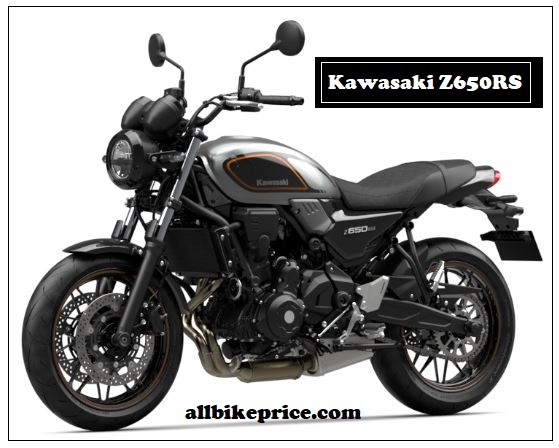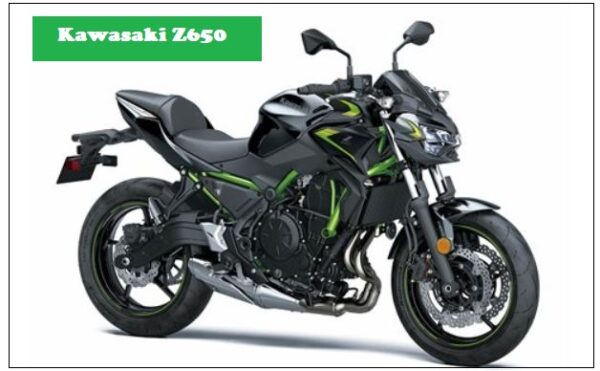2023 Kawasaki Ninja H2 Top Speed, Price, Specs ❤️ Review
2023 Kawasaki Ninja H2 Top Speed, Mileage, Price, Specs, Review, HP, Seat Height, Weight, Overview
Hey, Guys, Hi!!!! I hope you all are doing well. Today Here in this article, we are going to share with you the Kawasaki Ninja H2 Hyper Sport Bike Complete guide Including:
- Kawasaki Ninja H2 Price
- Kawasaki Ninja H2 Specs
- Kawasaki Ninja H2 Top speed
- Kawasaki Ninja H2 For sale Price
- Kawasaki Ninja H2 Review Video
- Kawasaki Ninja H2 Price 2023
I hope that all kinds of information useful to you, cause I assure you that all types of information are genuine and reliable, no need to go anywhere after visiting our site. So let’s check it out.
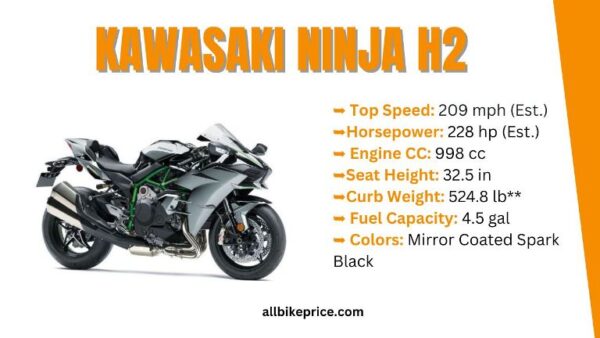
The Kawasaki Ninja H2® and Kawasaki Ninja H2® Carbon motorcycles bring the mind-bending power of Kawasaki’s supercharged hypersport racer to the street. Boasting a powerful 998cc inline 4-cylinder engine, state-of-the-art electronics, and the latest Brembo® brakes, the Kawasaki Ninja H2 and Kawasaki Ninja H2 Carbon amount to pure performance on the road.
2023 Kawasaki Ninja H2 Price in The USA
➥ Price: MSRP $31,500
Kawasaki Ninja H2 Mileage
➥ Mileage: 15 Kmpl (Approx)
Kawasaki Ninja H2 Top Speed
➥ Top Speed: 209 mph (Est.)
Kawasaki Ninja H2 Horsepower
➥Horsepower: 228 hp (Est.)
Kawasaki Ninja H2 CC
➥ Engine CC: 998 cc
Kawasaki Ninja H2 Seat Height
➥Seat Height: 32.5 in
Kawasaki Ninja H2 Weight
➥Curb Weight: 524.8 lb**
Kawasaki Ninja H2 Fuel Capacity
➥ Fuel Capacity: 4.5 gal
Kawasaki Ninja H2 Colors
➥ Colors: Mirror Coated Spark Black
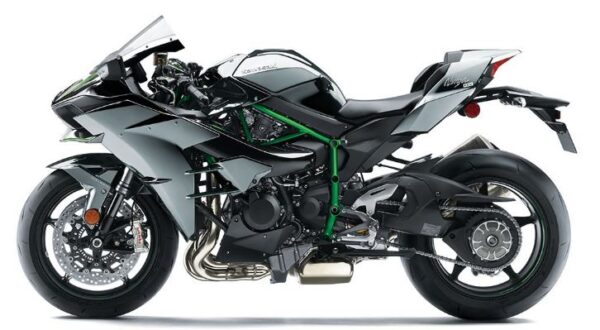
Kawasaki Ninja H2 Key Features
- 998cc, FOUR-CYLINDER, SUPERCHARGED ENGINE
- Street legal hypersport performance
- Bosch IMU with Kawasaki’s dynamic modeling software
- KYB AOS-II front fork and Öhlins TTX36 rear shock
- Kawasaki Quick Shifter (KQS)
- Kawasaki TRaction Control (KTRC–9 modes)
- Kawasaki Intelligent anti-lock Brake System (KIBS)
- Kawasaki Launch Control Mode (KLCM)
- Kawasaki Engine Brake Control (KEBC)
- All LED lighting
- Bridgestone Battlax RS11 sport tires
- Smartphone Connectivity via RIDEOLOGY THE APP
- All-Digital TFT color intstrumentation

Kawasaki Ninja H2 Specs
ENGINE
| Engine | Liquid -cooled, 4-stroke, In-Line Four, DOHC, 16-valve |
| Displacement | 998cc |
| Bore x Stroke | 76.0 x 55.0mm |
| Compression Ratio | 8.5:1 |
| Maximum Torque | 104.9 lb-ft @ 11,000 rpm |
| Fuel System | DFI® with 50mm throttle bodies (4) with dual injection ; Kawasaki Supercharger |
| Ignition | Digital |
| Transmission | 6-speed, return, dog-ring |
| Final Drive | Sealed chain |
| Electronic Rider Aids | Kawasaki Cornering Management Function (KCMF), Kawasaki TRaction Control (KTRC), Kawasaki Launch Control Mode (KLCM), Kawasaki Intelligent anti-lock Brake System (KIBS), Kawasaki Engine Brake Control, Kawasaki Quick Shifter (KQS) (upshift & downshift), Öhlins Electronic Steering Damper |
SUSPENSION
| Front Suspension / Wheel Travel | 43mm inverted fork with adjustable rebound and compression damping, spring preload adjustability and top-out springs/4.7 in |
| Rear Suspension / Wheel Travel | Uni-Trak®, Öhlins TTX36 gas charged shock with piggyback reservoir, 24-way compression and rebound damping and adjustability and hand-turn spring preload adjustability, and top-outspring/5.3 in |
BRAKES
| Front Brakes | Dual radial-mount, opposed 4-piston Brembo Stylema® calipers, dual semi-floating 330mm discs, KIBS ABS |
| Rear Brakes | Opposed 2-piston calipers, single 250mm disc, KIBS ABS |
TIRES
| Front Tire | 120/70 ZR17 (58W) |
| Rear Tire | 200/55 ZR17 (78W) |
DIMENSIONS
| Frame Type | Trellis, high-tensile steel, with swingarm mounting plate |
| Rake/Trail | 24.5°/4.1 in |
| Overall Length | 82.1 in |
| Overall Width | 30.3 in |
| Overall Height | 44.3 in |
| Ground Clearance | 5.1 in |
| Seat Height | 32.5 in |
| Curb Weight | 524.8 lb* |
| Fuel Capacity | 4.5 gal |
| Wheelbase | 57.3 in |
| Color Choices | Mirror Coated Spark Black |
| Special Features | Rideology the App Smartphone Connectivity, all-LED lighting, Highly Durable Paint, TFT Instrumentation |
| Color Choices | Mirror Coated Spark Black |
WARRANTY
| Warranty | 12 Month Limited Warranty |
| Kawasaki Protection Plus™ (optional) |
12, 24, 36 or 48 months |
You May Also like to Check:
- Kawasaki NINJA H2 SX SE Plus
- Kawasaki NINJA H2 SX SE
- Kawasaki NINJA H2 SX
- Kawasaki Ninja ZX-14R ABS
- Kawasaki Ninja H2R
Kawasaki Ninja H2 Features
Supercharged Engine
Using the knowledge and technology of Kawasaki Heavy Industries, Ltd. (KHI), Kawasaki’s supercharged engine has a high output while keeping a small size.
The key to the engine’s amazing performance is its supercharger, made just for motorcycles using technology from the Kawasaki Gas Turbine & Machinery Company, the Aerospace Company, and the Corporate Technology Division.
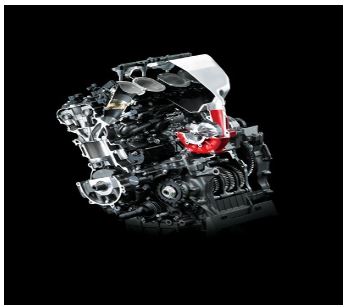
One of the best things about designing the supercharger in-house and making it fit the engine’s needs was that engineers could get high-efficiency performance in various conditions.
This would not have been possible if they had just used an aftermarket supercharger or tried to make it work.
A supercharger needs to be very efficient so that as the air is compressed, it doesn’t get too hot and lose power.
And while most superchargers can only work efficiently in a few situations, the Kawasaki supercharger can work efficiently over a wide range of pressure ratios and flow rates.
This means that it can work efficiently at a wide range of engine speeds and vehicle speeds. This wide range of efficient operations, which is similar to having a wide power band, makes it easy to speed up quickly.
Due to the supercharger’s high efficiency and low heat gain, an intercooler was not needed. This saved a lot of weight and space and made it possible for the engine to be small.
Assist & Slipper Clutch
Based on what racers said, the Assist & Slipper Clutch has two types of cams: an assist cam and a slipper cam. These cams move the clutch hub and operating plate together, depending on the driver’s wants.
During normal operation, the assist cam works like a self-servo mechanism, pulling the clutch hub and operating plate together to squeeze the clutch plates. This lowers the total clutch spring load, which makes the clutch lever feel lighter when you use it.

When there is too much engine braking, like when you downshift quickly or by accident, the slipper cam kicks in and pushes the clutch hub and operating plate apart.
This reduces back torque by taking pressure off the clutch plates and keeps the back tire from hopping and sliding. This race-style function is helpful when riding on a track or for sport.
Economical Riding Indicator
Kawasaki models can get a high fuel efficiency level by using high-precision electronic control to run the engine.
But the rider has a lot of control over how much fuel is used by how they use the throttle, which gear they choose, and other things.
The Economical Riding Indicator is a function that shows when the way the bike is being driven uses little fuel.
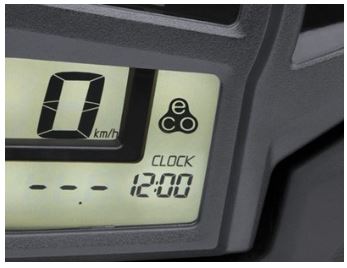
The system constantly checks how much fuel is being used, no matter how fast the vehicle is going, how fast the engine is going, where the throttle is, or what other riding conditions are.
An “ECO” mark shows up on the LCD screen of the instrument panel when fuel use is low for a given speed. This means that fuel efficiency is high. You can use less gas by keeping the “ECO” mark while driving.
Effective vehicle speed and engine speed can vary from model to model, but riders can save fuel by paying attention when the “ECO” mark shows up. This is a good way to increase the cruising range.
Also, using less fuel helps reduce the amount of damage done to the environment.
Electronic Throttle Valves
The ECU can control the amount of fuel (via fuel injectors) and air (via throttle valves) that goes into the engine with Kawasaki’s fully electronic throttle actuation system.
When the fuel injection and throttle valve are set up perfectly, the engine responds smoothly and naturally and makes the most power.

The system also helps to cut down on emissions in a big way. Electronic throttle valves also allow for more precise control of electronic engine management systems like S-KTRC and KTRC, as well as the use of electronic systems like KLCM, Electronic Cruise Control and Kawasaki Engine Brake Control.
Kawasaki Engine Brake Control With the Kawasaki Engine Brake Control system, riders can choose how much the engine brakes. When the system is turned on, the effect of the engine brake is lessened, making it easier to ride on the track.
KLCM (Kawasaki Launch Control Mode)
KLCM is designed to help riders by maximizing acceleration when moving off from a stop. It does this by electronically controlling engine output to keep wheels from spinning when moving off.
When the rider pulls in on the clutch lever and turns on the system, the engine speed is limited to a set speed while the throttle is open.
Once the rider lets go of the clutch lever to engage the clutch, the engine speed can go up, but the power is limited so that the wheels don’t spin and the front wheel stays on the ground.
Once a certain speed is reached or the rider shifts into third gear, the system turns off itself.
Depending on the model, riders can choose from different modes that get more intrusive as they go up the list.
KCMF (Kawasaki Cornering Management Function)
Using the latest version of Kawasaki’s advanced modeling software and feedback from a compact Inertial Measurement Unit (IMU) that gives an even clearer real-time picture of chassis orientation, KCMF monitors engine and chassis parameters throughout the corner, from entry to apex to corner exit, adjusting brake force and engine power for a smooth transition from accelerating to braking and back, and to help riders follow their intended path.
KCMF is in charge of a variety of systems, which vary by model, but may include the following:
KTRC (Kawasaki Traction Control)
KTRC is Kawasaki’s advanced traction control system. It makes sport riding more fun and gives you the confidence to ride on slippery surfaces.
Multiple rider-selectable modes (the number of modes varies by model) offer progressively more intrusive levels to match the rider’s needs and preferences.
Less intrusive modes keep the best grip when turning corners. Made for sport riding, they make it easier to speed up out of corners by getting the most forward drive from the back wheel.
And because Kawasaki’s advanced software does its dynamic analysis based on the orientation of the chassis in relation to the track surface (rather than to a horizontal plane), it can take into account things like corner camber, slope, etc., and adjust itself accordingly.
When too much wheel spin is detected in the more intrusive modes (and in some models, in any mode), the engine output is lowered to give the bike more grip.
This lets riders confidently handle both short, slippery spots (like train tracks or manhole covers) and long stretches of bad roads (like wet pavement, cobblestone, or gravel).
Smartphone Connectivity
Riders can connect to their motorcycles wirelessly thanks to smart technology. With the smartphone app “RIDEOLOGY THE APP,” you can access several instrument functions, making riding a motorcycle more fun.
On the smartphone, you can see information about your car, such as the odometer, fuel gauge, maintenance schedule, etc.
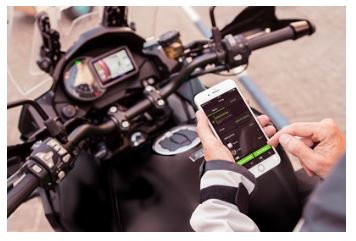
On the smartphone, you can look at riding logs, which depend on the model and may include GPS route, gear position, rpm, and other information. When the phone is connected, call and mail alerts are shown on the instrument panel.
Riders can also use their smartphones to change their motorcycle’s instrument display settings, such as the units they want to use, the time and date, and so on.
You can even use the smartphone on some models to check and change the vehicle’s settings, like Rider Mode, electronic rider support features, and payload settings.
KQS (Kawasaki Quick Shifter)
KQS is designed to help riders get the most speed on the track by letting them upshift without using the clutch when the throttle is fully open.
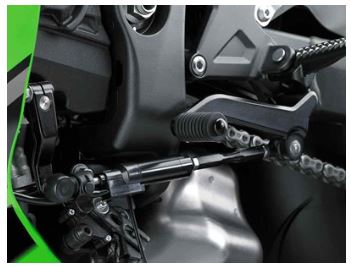
When the shift lever is moved, it sends a signal to the ECU to turn off the ignition so that the next gear can be engaged without using the clutch.
The system controls the engine’s speed on models with clutchless downshifts so that the next lower gear can be chosen without using the clutch when the car slows down.
ABS (Anti-lock Brake System)
Kawasaki ABS systems use sensors in the front and back wheels to track how fast each wheel is going.
If information from one of the sensors shows that a wheel lock has happened, the ABS ECU tells the pump in the ABS unit to change the pressure of the brake fluid by releasing and reapplying pressure until normal operation is restored.
ABS gives riders peace of mind, which makes riding more enjoyable.
Kawasaki Ninja H2 Images
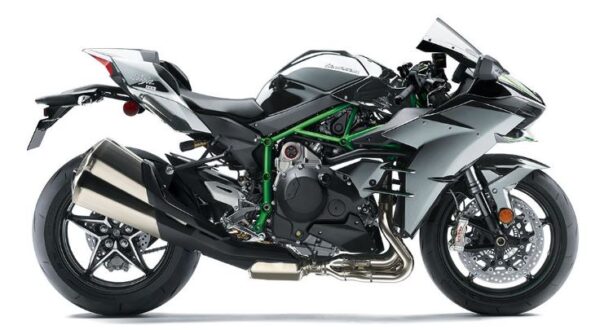

That was all about the Kawasaki Ninja H2 For Sale Prices Specs Features Images, we hope it will be helpful to you for buy or sell this model bike, but if you have any problem regarding this post, then please comment for us we will try to solve it. Thanks for visiting our site, and please stay with our website for more stuff like this.
Kawasaki Ninja H2 FAQs
How much is a Ninja H2 worth?
The 2023 Ninja H2 retails for $31,500.
Is Ninja H2 faster than Hayabusa?
Both the R1 and the Busa are fast and hit their top speeds with a lot of room to spare, but the H2 gets there much faster. From a stop, the H2 will reach its top speed almost a half-mile before the Hayabusa, and it will do so in half the time it takes the Hayabusa to go from 0 to top speed.
Is Ninja H2 the fastest bike?
Its Ninja H2R track only version is the fastest and most powerful production motorcycle on the market, with a maximum of 310 horsepower (230 kW) and 326 horsepower (243 kW) with ram-air.

I am Jack. Since 2016, I’ve been a blogger, and I adore writing. I greatly enjoy writing about Bikes, Motorcycles, ATVs, technology, and money. I also write about health and fitness. I maintain numerous blogs, including https://allbikeprice.com. allbikepriceinfo@gmail.com is how you may get in touch with me.


![[2023] Kawasaki Z125 Pro Top Speed, Price, Specs ❤️ Review](https://allbikeprice.com/wp-content/uploads/2022/05/Kawasaki-Z125-Pro-Top-Speed-Price-Weight-MPG-Specs-Review-Seat-Height.jpg)

